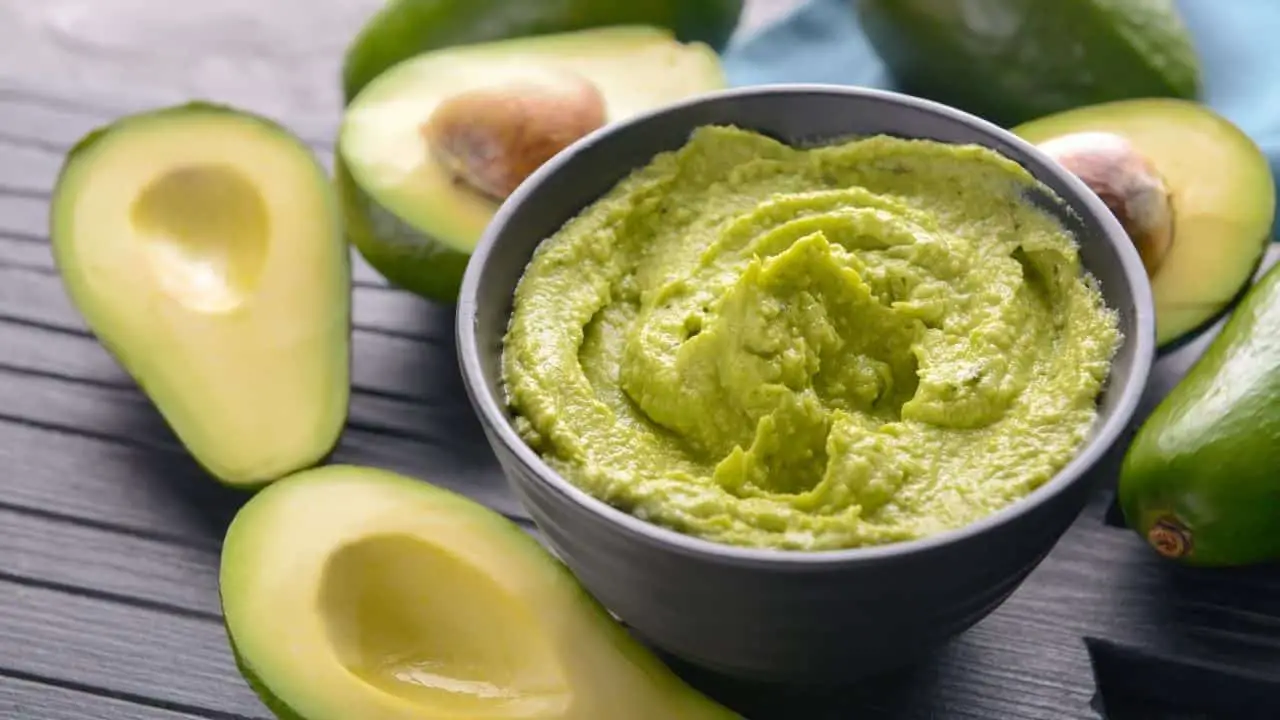Finding that perfectly ripe avocado can be tricky because you never know what it looks like inside till you cut it open. For the best chance of choosing the good, ready-to-eat avocado, pick the one with dark green, almost black-looking skin that feels slightly soft but doesn’t feel mushy to the touch.
Now, once you have found that perfectly ripe one for your guacamole, dips, or your toast spread, then here are some tips and tricks on how to mash avocado without it turning brown and going bad prematurely.
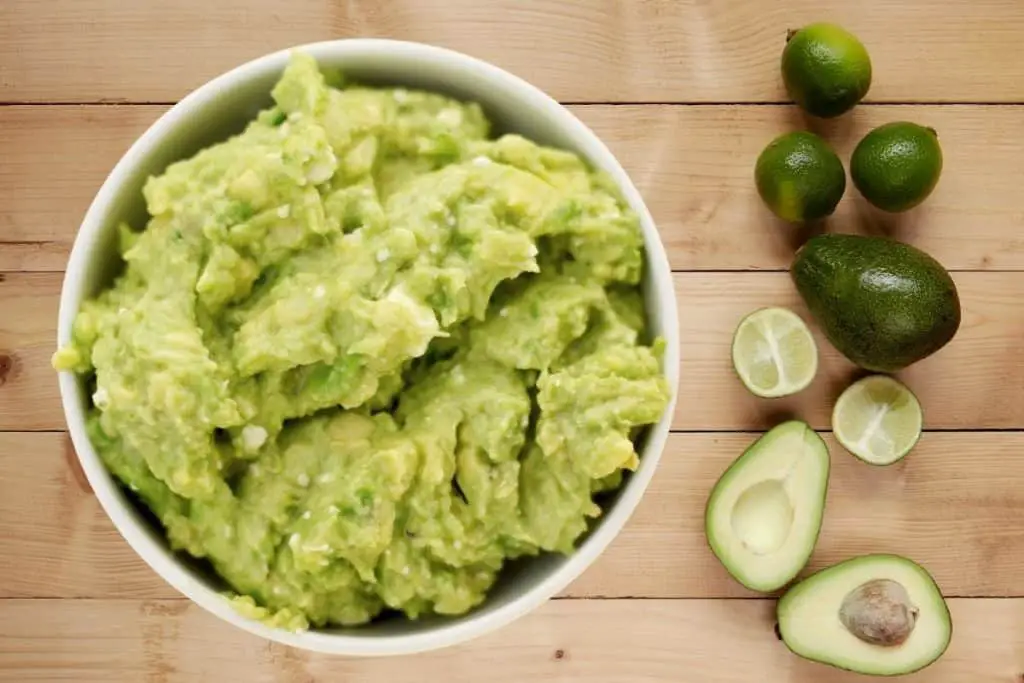
This article will give the detailed steps for mashing avocados, and talk about why this deliciously creamy fruit turns brown, and how to prevent this from happening.
Let’s get into it!
Steps For Mashing Avocados
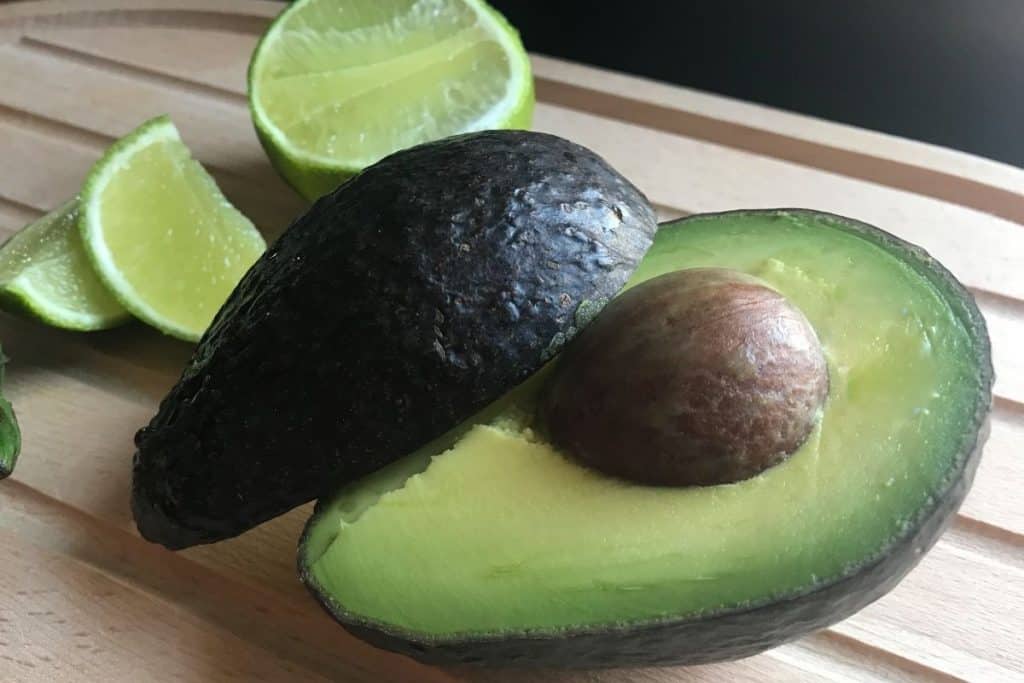
Mashing avocados is a pretty easy task, especially when you select the right kinds that are not under or overripe.
Choose a one with rich and buttery flavor like the Hass avocado, which is the predominant variety you are most likely to find in supermarkets anyway and give it a gentle squeeze with the palm of your hand.
The riper the avocado, the softer it feels when squeezed. The ready-to-eat or ready-to-mash fruit should yield to firm yet gentle pressure but should not feel too firm or overly soft and mushy.
The video below shows you an easy and effective way to mash and avocado and store it for days without going brown.
Follow the steps below to mash your avocados perfectly.
Items Needed
- Cutting board
- Mixing bowl
- Sharp knife
- Fork
- Lime
- Potato masher
Step 1
Hold the avocado in place on its side with your nondominant hand on a cutting board. Cut it lengthwise with your dominant hand. Do not cut through the pit; instead, go around it with the tip of the knife. Turn the avocado around and ensure to slice through from top to bottom completely.
Step 2
Hold the avocado up in both hands. Separate the two halves formed from the cut in the middle by twisting them in opposite directions, kind of twisting the Rubik’s cube. The pit will remain in one of the separated parts.
Step 3
Loosen the pit by hitting it slightly with a tablespoon and then directing the pit downwards as it may just fall out. If the pit seems a bit stuck then, use the spoon the dig around it, and remove it.
Step 4
Scoop out all the flesh with the spoon. To help the process, make a crisscross pattern on the flesh with a knife that loosens it up, then you can scoop along the scored lines.
Step 5
Avocados begin to turn brown fast when exposed to air. Adding a little fresh lime juice to the avocado flesh in the bowl will make it stay fresh longer. Just one-half or one-quarter of lime is sufficient.
Step 6
Mash the ingredients in the bowl with either a fork or a potato masher. Using a fork leaves the texture chunkier, which is some people’s preference for guacamole.
A potato masher gives a smoother texture and creamier consistency. This is more suitable as a spread or as an ingredient in many recipes.
Why Do Avocados Turn Brown?
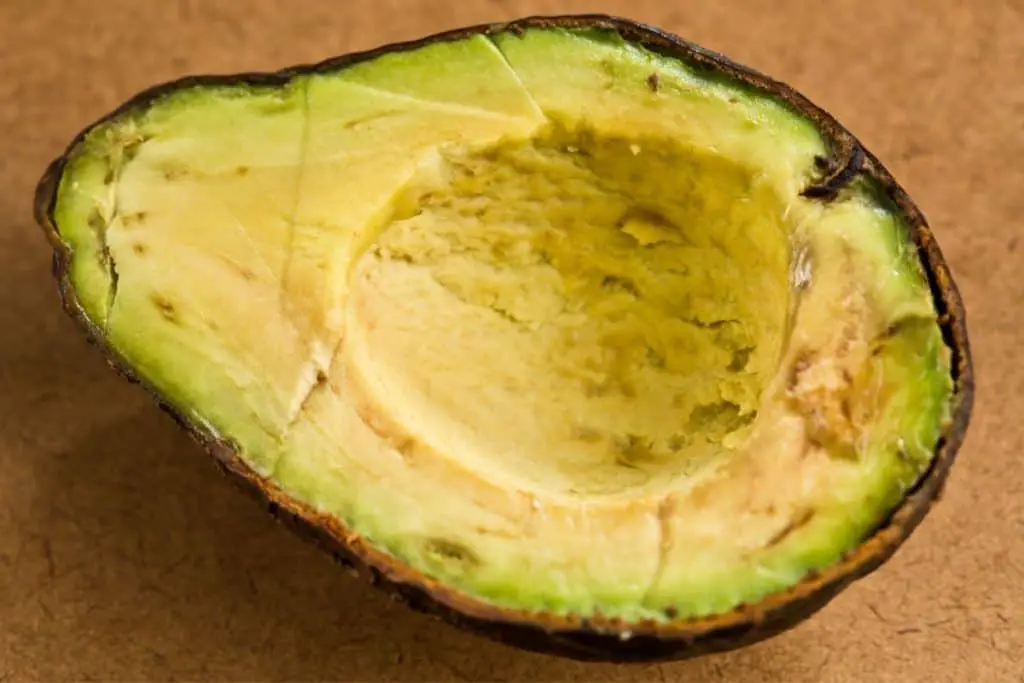
Once an avocado is ripe, you have a short amount of time, usually a few days, before it starts to spoil. To add to this problem, they begin to turn brown rapidly after being cut open.
So, it would be best to eat them immediately after cutting, and there’s a science behind this rapid browning phenomenon.
The flesh of avocados is primarily composed of fatty acids like oleic acid and linoleic acid. They also have minimal starch and sugar.
Avocado’s flesh rapidly turns brown due to its exposure to oxygen in the air and the phenolic compounds present in the avocado itself. Avocados contain an enzyme called polyphenol oxidase. It helps to convert phenolic compounds to a class of compounds known as quinones in the presence of oxygen [1].
Quinones polymerize; that is, they take smaller molecules and combine them into a long chain to produce polymers called polyphenols. This polymerization process shows as the brown color on the avocado.
The coloration is not seen on an uncut avocado because the skin is a barrier between the compounds and oxygen. The browning occurs due to the flesh’s exposure to oxygen and the damage to the plant cells when you cut into the fruit.
Can You Eat Slightly Brown Avocado?
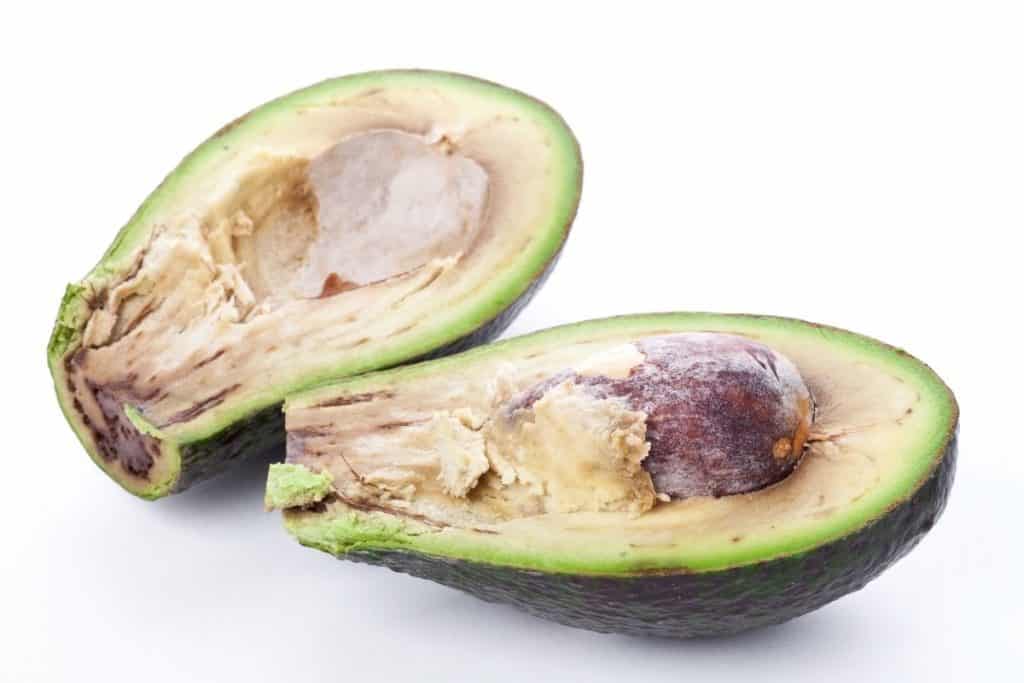
It can be pretty disappointing when you cut open that perfectly ripe avocado, and it begins to turn slightly brown.
Yes, it may not be the best-looking meal, and while you may feel let down by the appearance, it is still edible and safe. But, the less the browning, the better.
That an avocado appears slightly brown after slicing is not a sign of rot; instead, it means it has been exposed to oxygen. This is similar to the brown coloration also seen in apples. Most people often attribute this coloration to signify that the food has gone bad, but this is not true in all cases.
Of course, you also have to use your judgment when consuming avocados. If you have left it out for many days and it turns completely brown and squishy, it is likely no longer edible and should be thrown out.
Also, when an avocado has dark patches all over, it is likely to be rotten and not safe to eat. Still, a few brown spots could have been just due to bruising, and not a sign of spoilage, and can be cut away. If there is a sign of mold inside, or rancidity, or a sour smell then discard the whole fruit.
However, you can still enjoy your slightly brown avocados. The only difference might be the somewhat bitter taste, which can be quite subtle and hard to tell.
How To Keep Avocado From Turning Brown
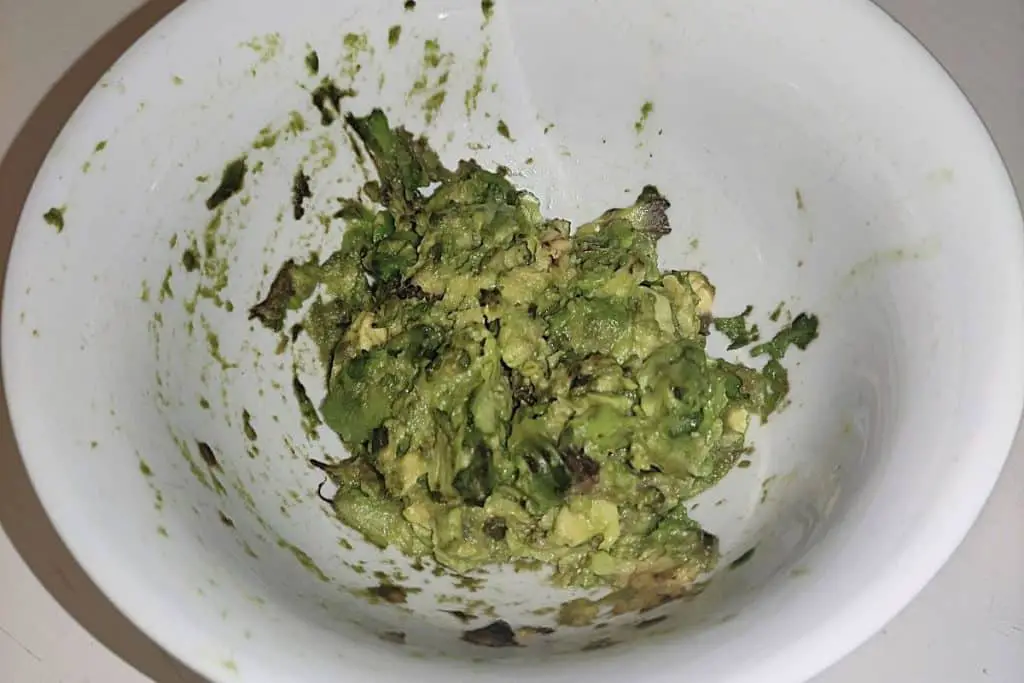
Though it is perfectly safe to eat a slightly brown avocado, there are some tips you can use to slow down the browning process. The key to retaining its fresh green color is to reduce the access of oxygen to the food.
Here are the best tips to prevent mashed avocado from turning brown and keeping it fresh.
Tip #1: Store the Mashed Avocado With the Pit
Leaving the pit in the avocado has shown to be quite effective at preventing it from browning. Similarly, you can include the pit in your mashed avocado and cover the bowl with plastic wrap for added protection.
However, the pit’s effectiveness can not be contributed to any magical qualities but it simply reduces the amount of air in contact with the flesh and keeps it from turning brown.
Tip #2: Add Lemon Or Lime Juice
Squeezing a little quantity of lemon juice or lime juice into the avocado keeps the green guac for a longer time. The acid in the lemon or lime juice slows down the oxidation and browning process.
Tip #3: Use Vinegar To Slow Down The Browning
Similar to lime and lemon juice, acidity in the vinegar will help slow the browning process that happens to avocados when exposed to the air.
Try not to add too much vinegar as the sour, acidic taste can easily overpower the milder, earthy flavor of the avocado.
Tip #4: Cover With Avocado Peels
Pressing the avocado peels on the surface of the mashed avocado prevents air from reaching it, thus preventing the browning process. This may be hard to achieve, as keeping the avocado skins flat is usually tricky, leaving the mashed avocado exposed. Probably useful if you really don’t have anything else to cover it with.
Tip #5: Put Plastic Wrap Against The Surface
The plastic wrap shields the surface of the mashed avocado or guacamole from the air and prevents it from turning brown. A tight seal that is pressed against the surface keeps air away from the avocado and enables it to remain greener longer.
Tip #6: Cover Mashed Avocado With A Layer of Water
Water stays on top of the avocado as a boundary that is impenetrable by air. It is unlikely that the mash will absorb the water.
To prevent the water from spilling, be sure to use plastic wrap to cover the bowl before storage. When ready to use, gently pour out the water and stir well before serving.
How Long Will Mashed Avocado Last?
Many people are not quite sure about mashed avocados’ storage and shelf life and worry about it going bad so fast that often any leftovers are thrown away prematurely.
So, how long does it last?
This will depend on the condition and ripeness of the avocado and the storage method used. To be on the safe side, make sure you inspect your avocados carefully before purchase, and for extended storage, always buy those that are undamaged and slightly firmer rather than too soft.
A fridge is an excellent place to store avocados, mashed, not unmashed, to increase their shelf life.
To store mashed avocado fresh in the refrigerator, pack it tightly in a glass container, pour a little quantity of water over the mash, and fit a lid tightly over the top. You can also store it in a container with an airtight lid or plastic wrap.
Mashed avocados remain fresh for about three to four days in the fridge but will turn brown quickly if not tightly covered up or no acid is added to the flesh.
However, if you leave the mash on the kitchen counter at room temperature, it starts turning brown within an hour. So, if you are not using it within this timeframe, it is best to store it in a fridge to increase its shelf life.
You can also put it in an airtight container or a resealable freezer bag and freeze it for up to 6 months. This can be used in guacamole, tacos, smoothies, or simply as a mashed avocado spread.
Delicious Ways To Use Mashed Avocado
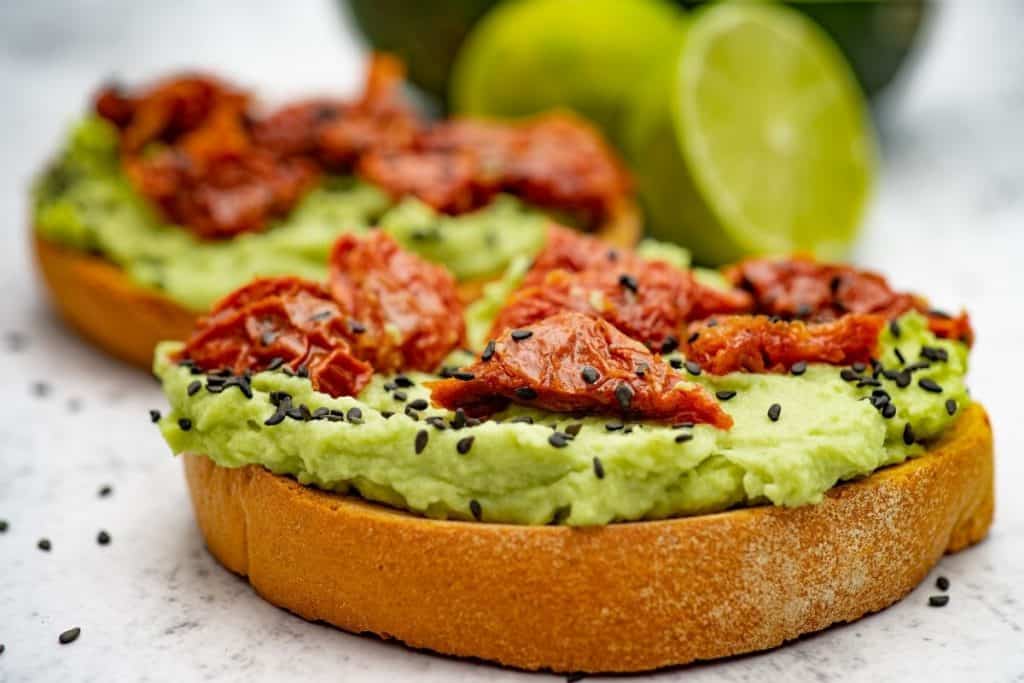
A common use for mashed avocado is in guacamole or avocado dip, but it can be enjoyed in many more ways. It is a perfect alternative for mayo in dishes like sandwiches, burgers, salads, pasta, etc.
Check out this nutritious and delicious beetroot and avocado weight-loss smoothie!
The creamy texture and rich flavor also make it suitable for pasta sauces. A simple way to eat mashed avocado is to spread it on toast for a rich, creamy, and healthy topping. Or you can just sprinkle them with a pinch of salt and pepper and eat on their own.
Read Also: Brown or Black Banana – Is It Rotten or Still Edible?
Final Thoughts
Now you know how to mash this earthy, creamy, and almost buttery fruit and enjoy it without turning brown using the tips and tricks mentioned above. Remember that slightly brown avocados are safe to eat, but if you find the look off-putting, then you know what to do to slow down the browning process.
